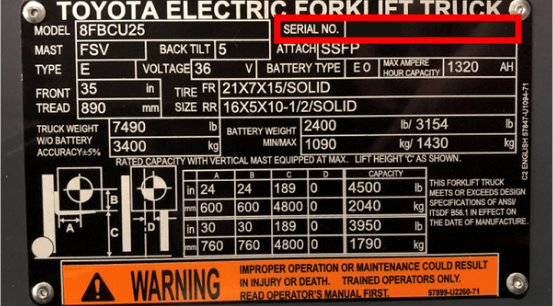Under Pressure: Choosing The Right Clamp Force Control Type

Despite their usefulness, forklift clamps are one of the most underappreciated attachments on the market. Day in and day out, they spend their time opening, closing, and sometimes swinging and rotating to get the job done. It really is a thankless job, isn’t it? Never appreciated for what they can do, but always put down the minute they start damaging product. But is it really their fault?
Well sometimes it is, but oftentimes it’s no fault of their own. These clamps are under a lot of pressure (both literally and figuratively). Each forklift comes with a fixed hydraulic pressure setting which affects how tightly your clamp is going to grip onto a particular load. Lucky for you, there are ways to adjust this pressure setting, and this article will help you find the right one for your application.
Clamp Force Control: Three-Position Pressure Regulators
One of the common solutions to overcome product damage from high-pressure settings is to use a three-position pressure regulator, which is essentially a pressure relief valve assembly mounted on the forklift. As the name implies, there are three positions, and each one regulates how much pressure is being relieved in the hydraulic system (crazy, I know). The assembly is typically mounted in a convenient location relative to the operator for ease of use. The truck’s mast, cowl, and operator compartment are some of the most commonly used locations, although the closer you can mount it to the forklift’s control valve, the better. The pressure is adjusted by simply moving a lever to one of three preset positions.
Pressure can be set specifically for your loads for each of the three settings, which allows operators to quickly adjust on the fly. A pressure gauge on the valve will also display the current setting for reference. Given that there are only three different pressure settings, this solution is best suited for applications with less variety when it comes to load weights and sizes. It’s also the cheapest option, so applications with less throughput can also benefit since minor manual adjustments from time to time are usually less impactful to your bottom line.
Clamp Force Control: Hydraulic Force Control
Three-position pressure regulators can be useful, but they also allow room for operator error and complacency. This is where hydraulic force control (HFC) comes in. I know it sounds like something out of Star Wars, but trust me, you don’t need any midi-chlorians to use it. HFC is a hydraulically controlled automatic force system that will adjust the clamp force proportionally to the weight of your load – pretty cool, right? It does this by continually sensing how much hydraulic pressure is necessary to lift that particular load and adjusting the clamping pressure as load weight increases or decreases. This system requires no input from the operator as it works solely on its own to apply the right pressure to each load.
The benefits of this type of automatic pressure adjustment are readily apparent. You eliminate the possibility of operator error by removing responsibility for manually adjusting the pressure settings, which can greatly increase your productivity and reduce product damage. The system is also easy to install and requires little maintenance, reducing overall cost of ownership. Additionally, HFC’s can be adjusted to set the minimum starting pressure, maximum pressure and more. Consider using HFC’s in higher throughput applications and/or when the opportunity for operator error is high and more costly.
Clamp Force Control: Adaptive Force Control
Similar to hydraulic force control, adaptive force control (AFC) also automatically sets the pressure being applied to a load based on the load weight. The main differences are that AFC’s are typically only used with paper roll clamp attachments and they use pre-programmed information specific to your application to determine a ratio based on roll weights and paper types and. This capability provides ultimate precision to further reduce the possibility of product damage. These settings can also be adjusted easily using a laptop or desktop computer if roll sizes or types change.
Depending on the brand you go with, you can also get several additional features. Cascade’s AFC’s, for example, also provide the following features:
- Load Cushion™– lift accumulator that absorbs shocks in the hydraulic system, reducing the clamp force required to handle a load.
- Electronic Drop-Stop Valve – prevents clamp pads from sliding down and damaging the product after unclamping a roll in slack-chain condition and prevents pad jump when used with an accumulator.
- Digital Display – shows the clamping pressure in the circuit at all times, indicating that the circuit is functioning properly.
Given the additional safeguards to reduce product damage, this solution is ideal for very high throughput applications and where product damage tends to be more costly due to higher-value products. It’s also more beneficial for customers with a variety of roll sizes due to its adaptability and customization capabilities.
Regardless of your hydraulic clamping needs, the potential value added by choosing the right type of pressure regulation cannot be underestimated. Consider your return on investment for each type and make your decision carefully. When in doubt, consult with your local, authorized Toyota dealer for help with finding the right product to fit your specific needs.


